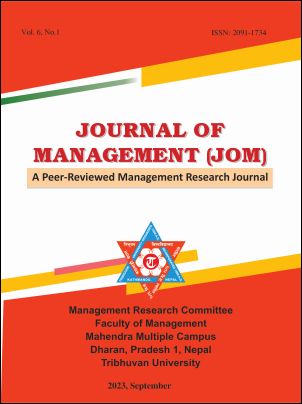Effect of Tourism and Remittance Income on Economic Growth in SAARC Countries
DOI:
https://doi.org/10.3126/jom.v6i1.58862Keywords:
ARDL model, residuals, co-integration, GDP growthAbstract
The paper examines the effect of remittance and tourism income on economic growth in SAARC countries. It is based on the exploratory and descriptive research design and is mainly guided by the positivist research philosophy. The secondary data are used for the analysis, collected from the various reports of the World Bank and economic surveys of respective countries. The unbalanced panel data ranges from a maximum of 23 to a minimum of 14; altogether, 169 observations are evaluated. Some statistical and econometric tools like descriptive statistics, correlation analysis, panel unit root testing, and panel ARDL model are utilized to observe the relation and impact of tourism and remittance income on the GDP growth of SAARC countries. There is a high degree of correlation between GDP and remittance income. There is a moderate degree of positive association ship between GDP and tourism income. Tourism and remittance income positively and significantly impact the economic growth of SAARC countries in the long run. One per cent increase in remittance and tourism income increased 0.277 and 0.518 per cent in GDP, respectively, in SAARC countries. The impact of tourism income is stronger than the impact of remittance income in promoting economic growth in SAARC countries. But in the short run, the significant impact of tourism and remittance income is not identified.
Downloads
Downloads
Published
How to Cite
Issue
Section
License
© Management, Research Department, Faculty of Management, Mahendra Multiple Campus, Dharan, Nepal

